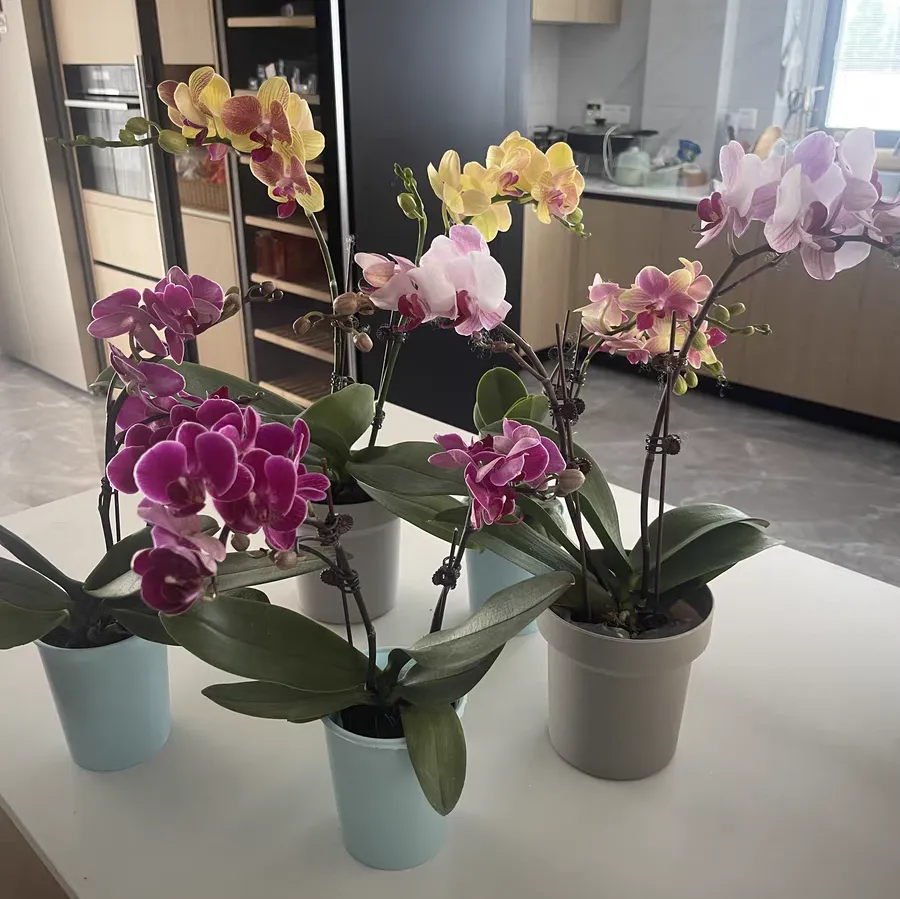While it's a joy to see Phalaenopsis orchids sprout flower spikes in summer, the high-temperature and high-humidity weather harbors hidden risks. Scientific management is essential to avoid growth issues and ensure the flower spikes grow smoothly and bloom abundantly.
### I. Watering
In summer, environmental humidity often exceeds 50%, increasing the sensitivity of Phalaenopsis roots to moisture. Adopt a **humidity-first monitoring principle**:
- Suspend regular watering when humidity ≥ 50%.
- If the planting medium is completely dry, use **spray irrigation** along the pot edge to slightly moisten the sphagnum moss. Avoid flooding, as waterlogging in the medium can cause root suffocation, leading to root rot, pest infestations, or viral infections. After watering, promptly drain excess water from the tray to keep roots dry and ventilated.
### II. Light Management
1. **Shield from direct sunlight**: Native to rainforest shade, Phalaenopsis need protection from summer sun exposure. Use sunshade nets, sheer curtains, or relocate to a north-facing windowsill to prevent leaf scorching.
2. **Enhance ventilation**: Stagnant high-temperature environments promote viral disease outbreaks. Maintain air circulation with a low-speed fan or by opening windows for ≥6 hours daily. If indoor temperatures exceed 32°C, use air conditioning to maintain 25–28°C.
### III. Fertilization
1. With slowed metabolism and reduced nutrient absorption in summer, follow the principle of **"light fertilization, frequent application, and balanced nutrition"**.
2. Use **Huaduoduo No.1 (20-20-20 N-P-K)** water-soluble fertilizer diluted 1500x, applied every 10–15 days to supplement basic N-P-K nutrients and promote robust growth.
3. While Huaduoduo No.2 is a flower-promoting fertilizer, high temperatures (>30°C) significantly reduce phosphorus-potassium absorption. Excess phosphorus risks soil salinization, so defer use.
### IV. Emergency Treatment for Stagnant Flower Spikes and Long-Term Care
If high temperatures stall flower spike growth, take "prune to止损 and recharge for rejuvenation" measures:
1. **Timely pruning**: Cut the flower spike 1–2 cm from the base to reduce nutrient consumption.
2. **Recovery care**: Use 0.1% brassinolide solution + Huaduoduo No.1 for root drenching to enhance stress resistance.
3. **Environmental optimization**: Control temperature and humidity strictly. When autumn temperatures drop below 25°C, Phalaenopsis will naturally initiate a new round of flower bud differentiation.
**Daily care tip**: Supplement with an LED plant grow light for 4–6 hours during low-light periods to meet photosynthetic needs while avoiding natural强光 damage.
#PhalaenopsisCare #SummerGardeningTips #FlowerSpikeMaintenance
What to Do if Phalaenopsis Grows Flower Swords in Summer

Share with
Tagged in :




Leave a Reply